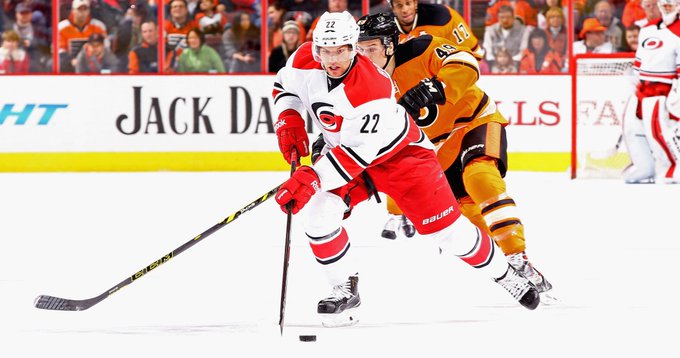Player development seems to always result in more questions than answers. How likely is it for a top pick to pan out? What makes a player a “steal”? Last Word On Hockey will be starting a new series on how to properly develop prospects from all different spots throughout the draft. This week’s piece involves top-15 picks and how they were used early in their careers.
Player Developments Of Top-15 Picks
In the span of 2005 through 2015, there were 21 total selections made between 11th overall and 15th overall on forwards playing in North America. Looking at all 21 forwards, they were split into different categories. Today, we’ll look at the category of “Rushed slightly”. That category had three players. Those players were Jake DeBrusk, Zack Kassian, and Zach Boychuk. In this piece, we will look at Boychuk.
Player Development Of Zach Boychuk
Zach Boychuk, who was drafted 14th overall by the Carolina Hurricanes in the 2008 NHL draft, came from the Lethbridge Hurricanes of the WHL. In his DY-1 season with the Hurricanes of the WHL, he scored 31 goals and 60 assists for 91 points in 69 games. That was 1.319 points per game, which ranked second among those 21 forwards in DY-1 production. He followed that up with 33 goals and 39 assists for 72 points in 61 games, which was 1.18 points per game. That production ranked eighth amongst those same 21 forwards in DY production.
After getting selected by Carolina, he would remain in the WHL for an additional season. He would record 28 goals and 29 assists for 57 points in 43 games, for a rate of 1.326 points per game. That rate ranked ninth among 20 forwards still outside the NHL in their DY+1 production. Boychuk would get his NHL opportunity the following year.
How Was Zach Boychuk Used?
In his first professional season, Boychuk would split between the AHL and NHL. In the AHL, he would score 15 goals and 21 assists for 36 points in 52 games. Meanwhile, in the NHL, he would play 31 games, recording three goals and six assists for nine points, while averaging 10:45 time on ice per game. His analytics were decent in that small role. His even-strength offence goals above replacement (EVO) was a solid 2.3. Meanwhile, the only below replacement level stat was his even-strength defence goals above replacement (EVD), which was -0.5. Despite his somewhat poor defensive metrics, his EVO lifted his overall game. His wins above replacement (WAR) and goals above replacement (GAR) in all situations were at decent 0.7 and 3.8 marks, respectively.
In Boychuk’s second professional season, he would again split between the AHL and NHL. This time, he would play 60 AHL games, scoring 22 goals and 43 assists for 65 points. Meanwhile, in 23 NHL games, he would score four goals and three assists for seven points while averaging 10:43 time on ice per game. Boychuk’s game took a slight hit in every aspect, as his analytics also dipped. His EVO (1.0) and EVD (-1.4) both fell, leading to his WAR (0) and GAR (0.3) to fall close to below replacement level.
Zach Boychuk’s Time Continues To Decrease With Carolina
Zach Boychuk has been loaned to the Condors by Carolina. Andrew Miller has been loaned to Charlotte. #Condorstown pic.twitter.com/OU0yipNxoE
— Bakersfield Condors (@Condors) March 7, 2016
Just like years one and two, Boychuk would yet again split between the AHL and NHL. Just like in year two, he would see fewer games and less ice time than the year before. In his third professional season, Boychuk would record 21 goals and 23 assists for 44 points in 64 AHL games. At the NHL level, he scored two assists in 16 NHL games, averaging 8:55 time on ice per game. His analytics also fell, as his EVO (-0.6) slipped. His EVD reverted back to his rookie campaign (-0.6) but remained below replacement level as well. That led to his WAR (-0.1) and GAR (-0.6) to both fall below replacement level.
Overall, Boychuk was certainly a questionable pick. In fact, the very next selection was the great Erik Karlsson. Jordan Eberle also followed that pick later in the first round. However, his production was solid in juniors and in the AHL. He was never really put into a role to truly prove himself despite promising underlying stats in his first year. Carolina certainly owns some of the blame, but that isn’t just from a player development standpoint. It’s also from a scouting and drafting standpoint. He’s the definition of “Don’t draft for need, draft the top player available.” that some scouts preach. All in all, he would see 55 more NHL games, scoring five goals and seven assists for 12 points before setting off for Europe.
Junior league stats via Elite Prospects, NHL stats via Hockey Reference, NHL analytics via Evolving Hockey






